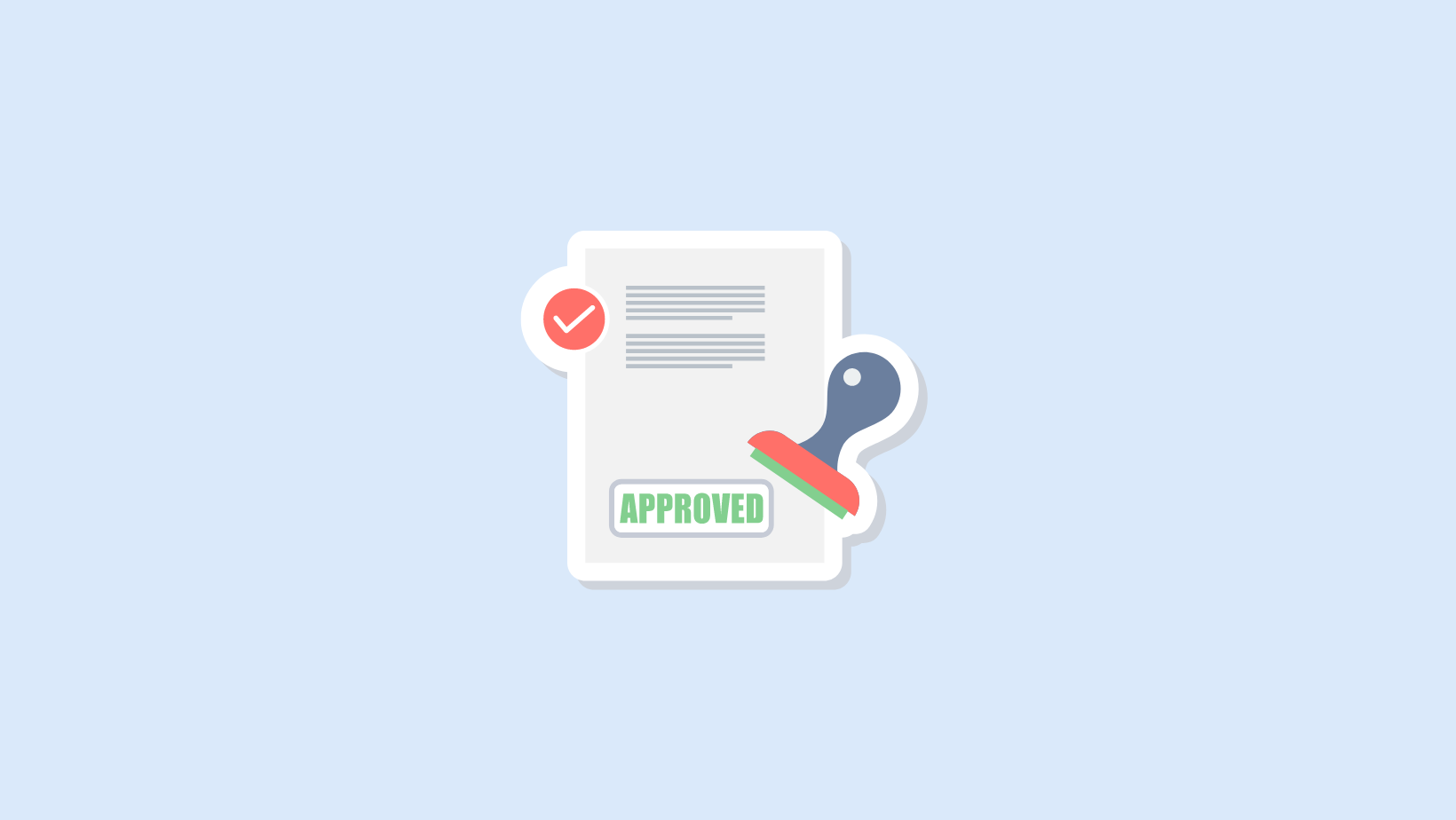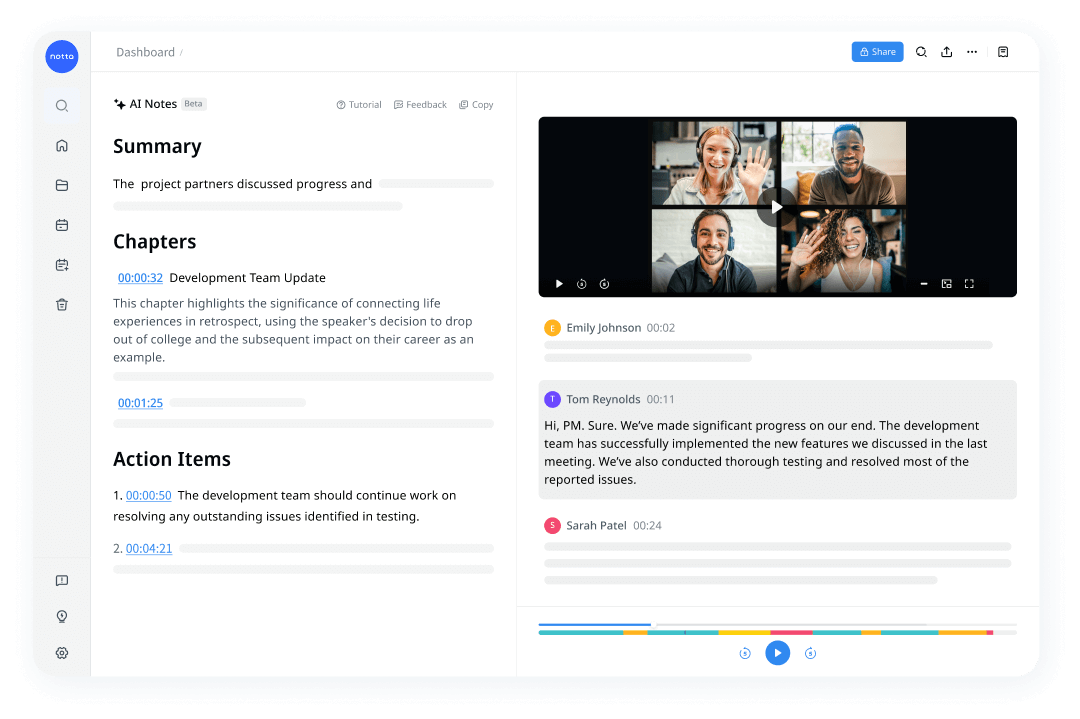Read next: How to Run a Board Meeting

How to Approve Meeting Minutes Effectively
Record, transcribe and summarize conversations with one click.
Imagine someone is absent from the board meeting and needs to catch up on what was discussed. Or, the meeting attendees need a document with all the decisions made so everyone knows what they need to complete before the next meeting. That's where the meeting minutes come in! Meeting minutes have literally saved the outcome of many projects I've worked on.
But you just can't note down what's said in the meeting and call it ‘meeting minutes.’ In fact, official meeting minutes need to be approved by the board members and then distributed among the attendees. When approving meeting minutes, you'll need to make sure they are factually correct and that everyone agrees with what's written in the document. Here, I'll outline how to approve or correct meeting minutes in some simple steps.
What are the meeting minutes?
Meeting minutes, also called minutes of meetings, are meant to contain the most important records or details (that, frankly, nobody would remember otherwise). They typically include what decisions were made, who the attendees were, and the official summary of what happened during the meeting.
They're a bit more formal than the personal notes attendees might create in their notebooks. The official meeting minutes typically include the date, time, location (in person/online), meeting agenda, attendees, decisions, and action items. Let's say a person (who conveniently missed the meeting) has a question about action items; he can refer back to the meeting minutes.
Why is meeting minutes approval necessary?
The approved meeting minutes are considered as the legal and official record of board meetings. At the end of a meeting, the corporate secretary prepares the minutes. The draft is shared with legal specialists and directors for approval. Once everyone approves the meeting minutes, they act as a reference point for people who missed the meeting.
Robert's rule of order approval of minutes
Robert's Rule of Order is a standard procedure for meeting minutes approval that many boards of directors follow. It's a process that helps everyone conduct better and more efficient meetings. But what exactly is Robert's rule? In simple words, Robert's rule indicates that minutes drafted before the meeting aren't official meeting minutes until all the board members approve them.
There are 6 steps that board members should follow while approving meeting minutes:
Motion: One of the board members will raise a hand and make a motion by saying, ‘I move that…’
Second: Similarly, the other board member seconds the motion.
Restate motion: The presiding officer or chairperson of the meeting restates the motion to the assembly so everyone will know about it.
Debate: Here comes the most important part: Everyone attending the meeting will debate and discuss the motion.
Vote: Once the debate is over, the board of directors will start the voting process. The chairperson will count both positive and negative votes.
Announce the result: At the end, the chairperson will announce the result based on the vote and instruct the relevant members to take action.
How to approve meeting minutes?
To approve meeting minutes, the chairperson will assume the motion of the meeting and ask board members to review and revise. It's worth noting that meeting minutes are declared approved only if they get unanimous consent or support from the board members. If there are any errors or inaccuracies in the created minutes, the board members will amend the minutes.
Here, I'll walk you through step by step process of how to approve meeting minutes:
1. Prepare and arrange the minutes
If you're the secretary or the chairperson of the meeting, it's your duty to prepare, organize, and arrange the minutes. If you need some help in writing the minutes, you may consider using any meeting minutes template or an AI transcription tool like a transcription AI app. It can help you record meetings and create transcripts with timestamps, which can then be shared with all the meeting attendees.

2. Distribute copies of minutes
Next, you'll need to distribute copies of the meeting minutes to all the board members. If it's an in-person meeting, you can distribute the paper copies. On the other hand, if it's virtual video conferencing, you may distribute the minutes via email.
Once the minutes are distributed among the board members, here's how to say motion to approve minutes. Start by asking, ‘We have distributed the minutes. Do you find any corrections?’ If there are changes or corrections requested by the board members, the chairperson will start the motion.
Let's explain the process with an approval of minutes example briefly:
In case of any correction, a motion is made and seconded. If it gets all the positive votes, the motion is passed.
If one of the board members doesn't approve the proposed correction, they can propose an alternative amendment. Once again, the motion needs to be seconded for a debate and voting process.
If the newly proposed corrections are passed, all the corrections are added to the meeting minutes.
At the end of the amendment, the secretary will conclude with a statement saying, ‘The meeting minutes have been approved as corrected.’
3. Approve meeting minutes
The process is repeated for all the proposed corrections. If there are no more revisions and the minutes are factually correct, you can end the meeting by saying, ‘The meeting minutes stand approved as read/distributed/corrected.’
How do you correct meeting minutes?
Sometimes, there are errors or inaccuracies in the original meeting minutes, which means you'll need to correct and amend them for re-approval. Here's how to correct meeting minutes in just a few steps:
1. Review the original meeting minutes
All the board members will start amendments by reviewing the original meeting minutes to identify errors or typos. Everyone will propose the changes, and the secretary will note the corrections in their minute book. Remember, you need to gather information and documents to support each proposed amendment.
2. Approach the corrections
If someone proposes the change, the board members start voting. If the amendment gets positive votes, the minutes are updated, and the amendment is signed or initiated.
3. Finalize and distribute the amended minutes
The meeting facilitator will read out the changes to the board members and confirm the amendments. Finally, it's important to proofread and review the amendments. Once the meeting minutes are amended, you'll need to circulate the updated minutes so everyone remains on the same page.
Key takeaways
Meeting minutes typically document the topics that were discussed and the decisions all the members made in the meeting. You can review the meeting minutes before the next session to refresh your memory on key points and keep organized notes for future meetings. But you shouldn't write the record literally minute by minute. Instead, it should outline high-level themes and document decisions.
When approving the meeting minutes, you'll need to eliminate any errors and focus more on factually correct information. If you want to reduce the manual work of creating correct meeting minutes for approval, try AI meeting assistants like Notta. It can record meetings and transcribe meeting minutes with timestamps. With Notta, you can condense transcripts and produce a list of action items to quickly check out what was discussed.
Choose Notta for accurate meeting minutes, effective summaries and professional formatting
FAQs
Do meeting minutes have to be approved?
Yes. Only the approved meeting minutes are considered an official record of the meeting. If the meeting minutes do not contain any errors, the board members will approve them. Without approving the meetings, the board members can't prove that the meeting happened and that some decisions were made.
What happens if minutes are not approved?
If the meeting minutes are not approved, it means the information is in draft form and not official. All the meeting participants may review, change, correct, or modify the meeting minutes to improve accuracy.
Can meeting minutes be changed after approval?
Yes, meeting minutes can be changed or amended after approval. The secretary or designated note-taker is responsible for making the changes in the approved meeting minutes. Once the amendments are made, the meeting members or the board of directors must approve the final amended minutes.